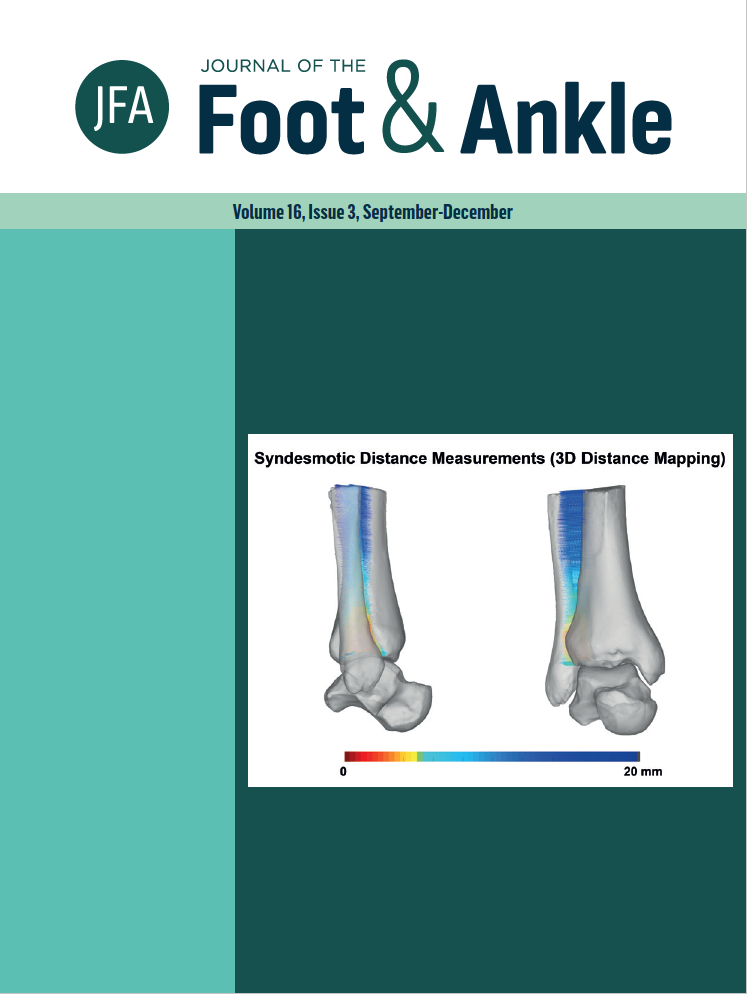Diabetic patients with inadequate flow of the posterior tibial artery and in dialysis are not good candidates for Syme amputation
DOI:
https://doi.org/10.30795/jfootankle.2022.v16.1643Keywords:
Diabetes, Ischemia, Amputation, Tibial artery, posteriorAbstract
Objective: There is a renewed interest in Syme amputation (SA) as it is considered a “lower limb salvage” procedure. The aim of this study was to describe the characteristics and evolution of diabetic patients who underwent SA to search for factors that would affect the outcome by comparing a group of patients who had a successful amputation against those who required a major amputation. Methods: Seventeen diabetic patients submitted to non-traumatic SA between 2008 and 2016 were analyzed retrospectively. Results: Eight patients required a higher level of amputation. In this group, six patients continued with the posterior tibial artery (PTA) occluded despite the revascularization, and seven were on dialysis. When assessing the permeability of PTA and dialysis as predictors of failure, they multiplied the risk by 20 (cOR of 24 and 21, respectively). However, after adjusting for both factors, there was only clinical significance. Conclusion: SA in diabetic patients may be an alternative in those with a preserved heel pad tissue vascularization and permeable posterior tibial artery at the time of surgery. Patients on dialysis are likely to fail with this level of amputation. Level of Evidence IV; Therapeutic Studies; Retrospective Cohort Study.
Downloads
Published
How to Cite
Issue
Section
License
Copyright (c) 2022 Journal of the Foot & Ankle

This work is licensed under a Creative Commons Attribution-NonCommercial 4.0 International License.







